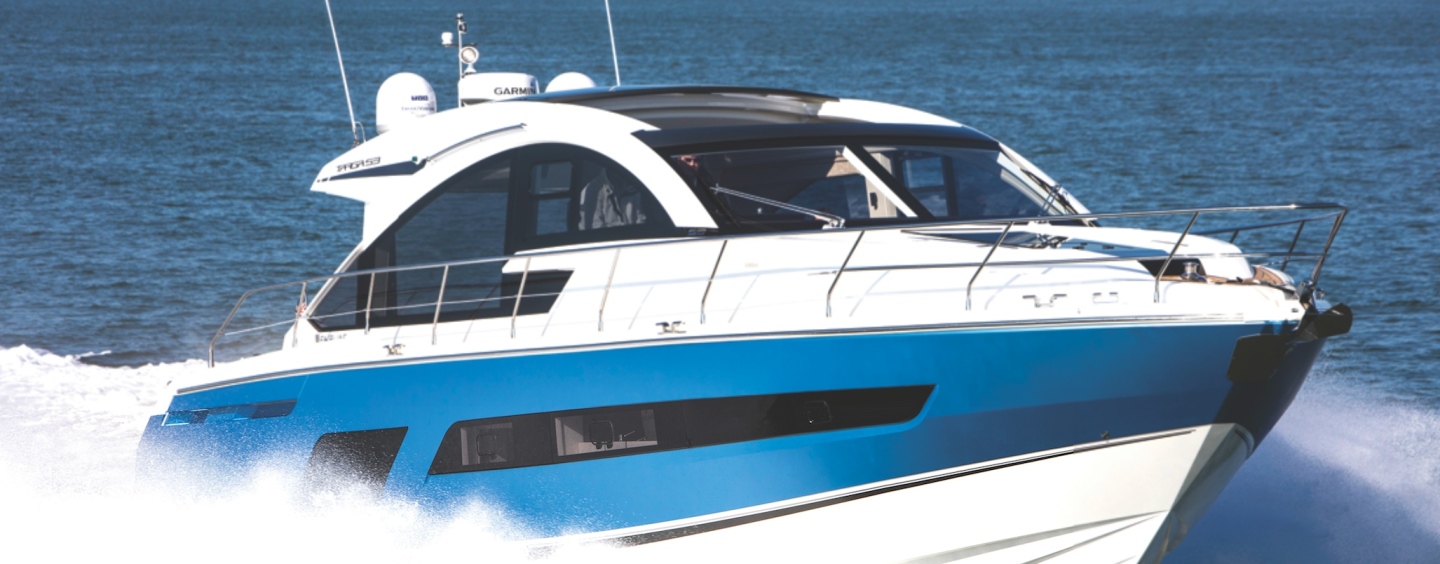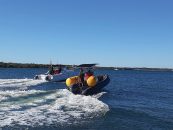Congratulations! You’ve made it! One of your life’s ambitions has been achieved and you are now the proud owner of a well-appointed powerboat. It is 60 feet of sleek, sea-going might and power. You couldn’t be more chuffed!
But before you get carried away and take that boat for a spin, there are a few issues in stepping up from a smaller boat to a larger boat that you might like to consider before fully opening the throttle.
Licensing
There was a policy proposal some years ago to require recreational boat owners of greater than 15 metres in length to undertake additional training and obtain a more advanced licence than the Recreational Marine Drivers Licence (RMDL). The policy proposal never made it into law, but the rationale for the policy remains sound; that is, there are additional risks associated with larger recreational vessels. It almost goes without saying that the skills required for operating a 4m tinny are significantly different to operating a 15m luxury powerboat, and yet no additional training or licensing are required.
An awareness of safe speed, keeping a proper lookout, and ship handling in confined waters, are all matters that take on greater significance as a vessel becomes larger, and could result in incidents and accidents that would not have occurred in a smaller vessel.
Keeping a proper lookout
The collision regulations require a proper lookout by sight and sound, as well as all available means appropriate to the prevailing circumstances and conditions. Any well-equipped vessel will have a few gadgets and electronic devices to assist the discerning mariner with their lookout obligation. A RADAR, chart plotter, maybe even an AIS transceiver, will likely be fitted.
The temptation for many new boat owners is to operate their vessel as if it is akin to a motor vehicle, and focus on looking out the front of the vessel, particularly when operating on the plane. But the obligation is to keep an all-round 360-degree lookout at all times. That is because a risk of collision may exist even from unexpected quarters, such as from the side or astern. We have acted for a number of unfortunate clients who have been involved in collisions who never saw the other vessel until collision was imminent, and avoiding action was unsuccessful.
The new owner must be aware of the blind spots (such as window frames) and move around the vessel regularly to ensure full situational awareness. If you are tied to the conning station and cannot move around, have one of your crew or companions assist you with keeping an all-round lookout by looking astern and around any obstructions to your vision.
RADAR (Radio Detection and Ranging) is a useful tool, but be aware of its limitations. RADAR will also have blind spots or areas of reduced performance, and you should be familiar with those areas for your vessel. RADAR also has limitations on performance in poor weather, and is not good at detecting objects with a poor RADAR signature, such as small vessels made from wood or fibreglass. Small tenders, yachts, windsurfers, surf skis and the like are not likely to be picked up by your RADAR at all. And perhaps most importantly, your RADAR will not assist you with keeping a proper lookout if it is not turned on, properly tuned, and set to the correct range scale.
Failure to keep a proper lookout might result in charges being laid under the Queensland marine safety act for failing to operate a vessel safely.
Obligations at Anchor
Obligations at anchor are often misunderstood. Anchoring your vessel does not relieve you of many of your obligations under the collision regulations. It is not like parking your car and turning off the engine. Your vessel is still in a seaway, and at risk of collision. Your vessel is also subject to the action of wind, wave, and tide, and is at risk of dragging anchor.
Consequently, your obligations to keep a proper lookout, and to take action to avoid collision, continue to apply when you are at anchor. The law is to the effect that the master’s obligation is to start the engines, lift the anchor, get underway, and then get out of the way of a vessel that is going to collide with you. Failure to do so is potentially a breach of your general safety obligation to operate your vessel safely.
One consequence of these ongoing obligations while at anchor relates to the responsible use of alcohol. At least one person on board should remain under the 0.05 alcohol limit, so as to be able to take effective action to avoid collision or to respond to any other kind of emergency, such as a fire. Opinions vary on the issue, but it is possible that the master of the vessel at anchor might be breath-tested and charged if found to be over that alcohol limit. While that may be unlikely for recreational vessels, we are aware of commercial masters that have been breath-tested and charged with alcohol-related offences while their vessels were lying safely at anchor.
Insurance
You will of course have insured your new pride and joy with a reputable insurer. But being a prudent person, you have probably also taken asset protection and taxation advice from your professional advisors. They may have recommended that your vessel be owned by a corporate trustee in some kind of trust structure.
Be aware that the fact of corporate ownership will mean that the contract of insurance will be issued under the Marine Insurance Act 1909, rather than the more familiar Insurance Contracts Act 1984. The difference in the legal regimes is significant and can result in an insurance claim being declined unless you are familiar with the requirements.
Conclusion
We certainly do not want to dampen your enthusiasm for your new vessel. But be aware that a step up in size and sophistication of your vessel will change your risk profile, and that may have some legal consequences. Get familiar with your vessel, improve your skills, be aware of your obligations, and as always, be safe on the water.
By John Kavanagh, MER-Director of Legal Solutions



























